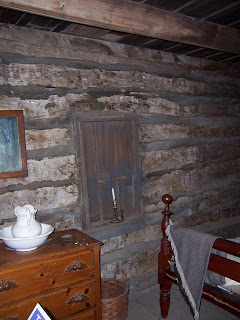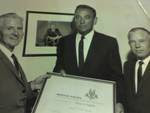
"Interesting!"
"Wow!"
"Cool!"
"Amazing!"
"Wanted my kids to see and learn local history."
"Great info!"
"Very fun...I'd like to stay here!!"
"Awesome!"
"Very authentic. Liked it very much!"
"Very good, thank you. :)"
"Very nice."
"Enjoyed!"
"Just loved it!"
"Wonderful exhibit!"
"A good little adventure!"
--August 10-18, 2010, guest register comments. Visitors hailed from Fort Worth, Mansfield, Arlington, Burleson, Denton, Frisco, Keller, Plano, Wichita Falls, Friona, Lubbock, Dublin, Haltom City, Colleyville, Weatherford, & Springtown, Texas, and Oklahoma, Florida, Japan, Delaware, Australia, California, Alabama, and Minnesota in this 8 day period
Why do we do it? Why do our historical interpreters get up every morning, dress in 19th century-style clothing, leave their air-conditioned homes with television and cushy recliners and drive to the Village to spend their days in 100+ degree heat? Why do our professional staff members develop programs, preserve artifacts, wrestle with budgets, and manage daily operations?
You. We do it because of you.
We do it for the kid who walks in the front door and gasps, saying, "WOW!" We do it for the mom, who is looking for a place to let her toddlers burn off a little energy while learning about life long ago. We do it for the historian, who has read about cabin-building in books but has never put his/her hand into the broadax marks that scar the cabin walls...until now.

We do it for the souls seeking respite in the shady, wooded, peaceful grounds. We do it for the teachers wanting to make history come alive for their students. We do it for the visitors from Texas, the United States, North America, and the world. We do it for the harried parents who couldn't get into the zoo and stumbled across the street to discover us. We do it for the families who take time out from their busy days to just be with each other, no modern distractions, no cars, no rush. We do it for all these and more.
We do it for you.

We're a little selfish, though. We also do it because we feel a deep connection to history and our own personal stories. We love seeing children's faces light up when they understand a new concept. We enjoy hearing the whoosh of the waterwheel, the flowing of the stream, the ping of the anvil, and the ringing of the school bell. We love helping families reconnect: with nature, with history, with each other.

We draw relaxation from demonstrating lost arts--weaving, woodworking, blacksmithing... We love hearing the laughter of children and adults as they try out a new skill. Shivers run down our backs when we rescue a treasured artifact from decay. We feel duty-bound to keep our ancestors memories alive, lest we forget. We want these structures, these artifacts, these stories, to live forever.
So paying bills, cleaning signs, designing exhibits and programs, putting on the dresses, bonnets, vests, and suspenders isn't an option: it's an obligation.

And we do it for you.
















.png)







+Bi-Plane.jpg)


.jpg)
